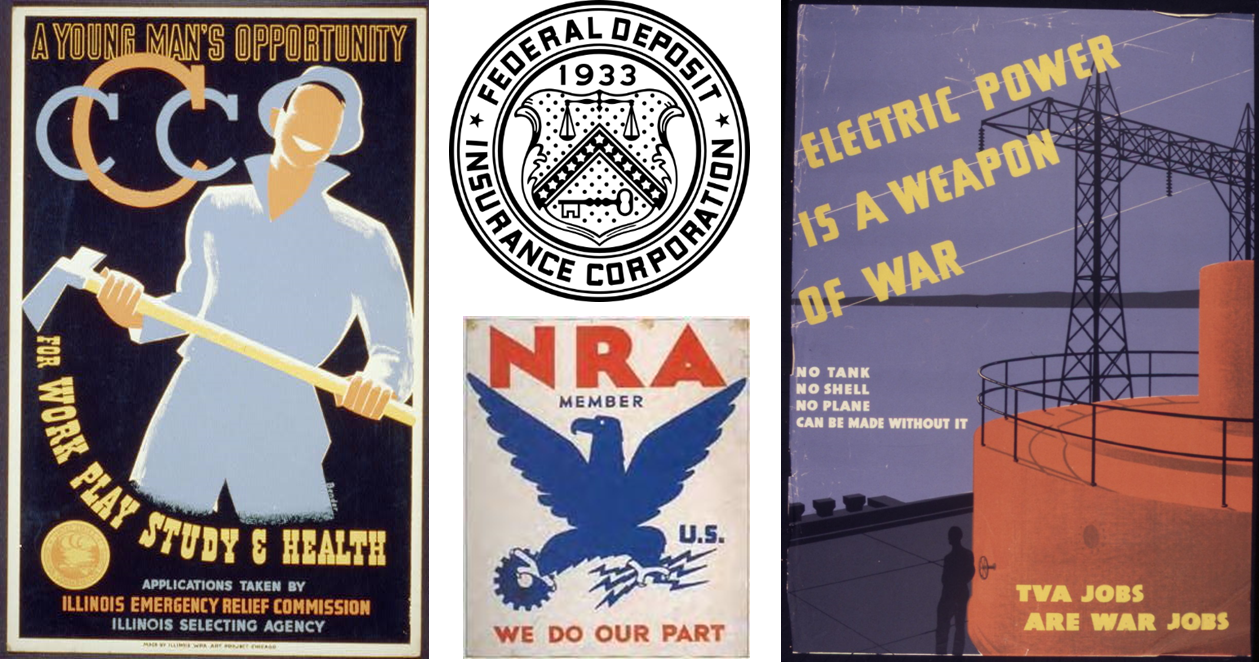Fdic New Deal
A documentary crafted by Arthur Lance and Loki Miller. Yeah it's dry, but no one's gonna see it anyways.
- One of the important events during his presidency was the establishment of the Federal Deposit Insurance Corporation. As part of FDR's New Deal Programs that encompassed his strategies of Relief, Recovery and Reform to combat the problems and effects of the Great Depression. 1929-1945: Depression & WW2.
- The FDIC will conduct identical live seminars on FDIC deposit insurance coverage for bank employees and bank officers on September 15, 2020, October 21, 2020, November 2, 2020, and December 10, 2020. Banker Resources.
Definition and Summary of the FDR New Deal Programs
Summary and Definition: The FDR New Deal Programs were a series of measures that aimed at achieving Relief, Recovery and Reform to combat the effects of the Great Depression. When Franklin D. Roosevelt assumed the presidency on March 4, 1933 more 12 million Americans were unemployed (25% of the population) and over 1 million were destitute and had been made homeless. The diverse list of FDR New Deal Programs provides an insight into the various problems that had to be addressed to counter the devastating effects of the Great Depression together with the series of droughts which had led to the Dust Bowl and the plight of American farmers. Various laws were passed which enabled the establishment of relief programs and 'alphabet soup agencies' to be established such as the AAA, CCC, PWA, TVA, SEC, FCS and the FERA.
New Deal Programs
Franklin D Roosevelt was the 32nd American President who served in office from March 4, 1933 to April 12, 1945. One of the important events during his presidency was the establishment of the New Deal Programs.
Fdic New Deal Quizlet
I know everyone is talking about stock market all time high’s right now, but its hard for me to hear them over the sound of hundreds of trillions in unfunded liabilities. Unfunded liabilities are debts payable at some point in the future that are currently not covered by cash or assets held on the balance sheet. The US has a growing number of unfunded liabilities (to the tune of over $200 TRILLION) and we will cover most of them, but for the purposes of this we only need to talk about FDIC.
As a part of the banking reform under the FDR new deal, as we discussed yesterday, the Glass-Steagall act limited commercial bank securities activity and regulated speculation. It also established the Federal Deposit Insurance Corporation which insured every banking deposit in the US with up to $2,500. This was an attempt to shore up bank reserves and stem the tide of bank runs happening across the country.
Over the years since the FDIC’s inception, the total value of insurance has increased up to $250,000 (thanks inflation) and is now only offered to member banks. The way the system was supposed to work is as a private insurance fund. Member banks pay into a shared pool of funds which are drawn upon in the event of a crisis.
However, as risky lending practices have ramped up over the years thanks to loose fiscal policy and the recent 0% reserve requirement for banks the value of this fund has become an aberration. The idea of FDIC being “private insurance” is all but laughable. On a good day, the Deposit Insurance Fund has about $100 Billion on hand. Most days, Banks have around $15 Trillion in insured deposits. Yes you read that right. FDIC could never cover even one percent of outstanding deposits…on a good day.
Fdic New Deal Definition
A real insurance fund would have to underwrite risk of payout into its policy but the FDIC takes into account none of the consequences cheap credit and loose money have had on the stability of the banking system. A cascade of liquidation could easily wipe out not only the cash banks do have on hand, but also every cent of the insurance fund.
This is where the lender of last resort comes in. The FDIC has a $100 billion line of credit with the US Treasury, and given past precedents you can almost guarantee that line of credit would be extended indefinitely in the event of a crisis. But wait, you say, the treasury is also insolvent, does the US not have $26 TRILLION in debt and growing by the second? To which I say, certainly, and don’t forget about the hundreds of Trillions in unfunded liabilities!

This is what’s so great about having a lender of last resort. The banks pay into insurance funds to shore up their deposits, the treasury can back that insurance fund with a line of credit, and the Fed can create infinite amounts of new money and credit to back it all up. You see, at the end of the day the idea that FDIC is “insurance” is laughable.

We’re the liquidation ever allowed to run its course, the Fed would assuredly step in and provide “unlimited liquidity” to meet deposit demand for member banks. FDIC is not insurance at all, but rather a clever way to link your checking and savings accounts to the money printer.
The illusion of safety.
-Collin

Book of the Month:
The Ethics of Money Production by Jorg Guido Huulsman
-“The use of paper money carries the risk of total and permanent value annihilation. This risk does not exist in the case of commodity money, which always carries a positive price and which can therefore always be re-monetized”
WTF1971.com is a participant in the Amazon Services LLC Associates Program, an affiliate advertising program designed to provide a means for sites to earn advertising fees by advertising and linking to (“WTF1971.com” (amazon.com, or endless.com, MYHABIT.com, SmallParts.com, or AmazonWireless.com).